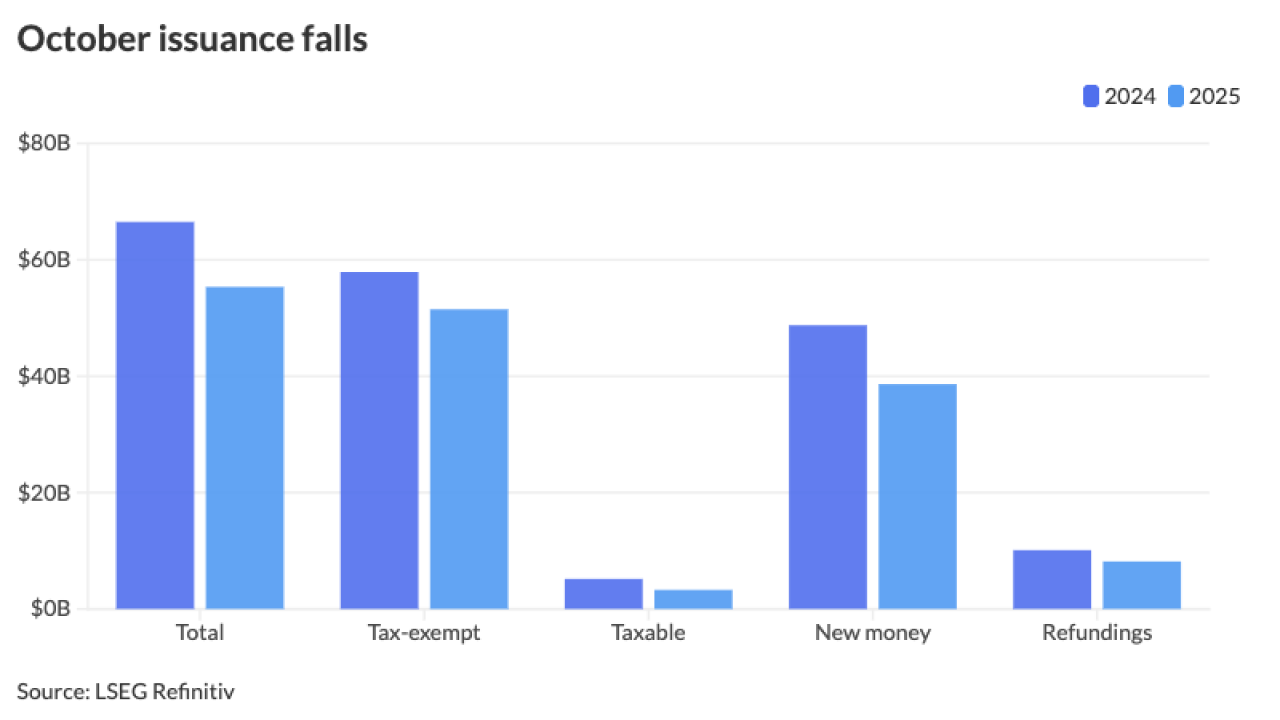
In an election year that promises dramatic choices about the future of New York City, the city's budget was enacted with unusual comity.
The fiscal year 2026 budget restores prior years' funding cuts and spends more for social services facing threatened Trump administration funding cuts.
It was
"Because of our strong fiscal management, our economy is robust, and we are able to make smart investments that help us achieve our mission of making New York City a safer, more affordable city that is the best place to raise a family, "Adams said in a press release.
Adams, who was facing federal felony corruption charges before President Donald Trump
"I have repeatedly insisted on our need to move away from a budget of restoration to one that strengthens investments in New Yorkers. This year, we are making big strides towards that goal," City Council Speaker Adrienne Adams said in a speech before the final budget vote.
Although the tone was harmonious in New York, cuts from the Trump administration and the GOP's tax bill could damage the city's finances, said Ana Champeny, vice president for research at the Citizens Budget Commission.
The budget totaled $115.9 billion, 3% higher than the 2025 budget. Adams' office projected out-year budget gaps of $5 billion in 2027, $6.1 billion in 2028, and $6 billion in 2029.
The city adjusted its 2026 tax revenue projections for fiscal 2025 and 2026 by about $617 million over the projected budget, Adams' press release said. He added that the city "must remain cautious as tax revenue growth is expected to slow in financial plan outyears."
S&P Global Ratings Director Jeff Zemetis said the city had "significant savings from lower-than-budgeted asylum seeker costs, providing some room for the city to shift spending to ongoing spending demands and other budget priorities," including education, children's services and social services."
S&P rates the city's general obligation bonds AA. The city carries ratings of AA-plus from KBRA, Aa2 from Moody's Ratings and AA from Fitch Ratings. All agencies assign stable outlooks.
The budget included $128 million to stabilize school budgets, holding schools harmless for any enrollment declines, according to Adams' press release. This is a policy that has been in place since the beginning of the pandemic, according to Champeny.
Lawmakers added $20 million to the education budget to meet statewide class size mandates. According to Adams, the city will spend $400 million in total in fiscal year 2026 to meet the class size mandates.
Members of the City Council touted dozens of social programs supported by the budget in a press release, including "expanded 7-day library service, permanent funding for 3-K, Pre-K and public school programs, newly increased childcare access for young children from zero to two years old, greater access to mental health care, stronger public safety programs, older adult services, and a $50 million increase in immigration legal services."
Lawmakers deliberately increased funding for areas targeted by the Trump administration, according to the council release. In addition to the immigration legal services, the city is increasing funding for gender-affirming healthcare.
The Adams administration ran "programs to eliminate the gap" throughout Adams' first three years in office, trimming the budgets of city agencies.
This budget restores many of those cuts, increasing funding for libraries, the City University of New York, criminal justice reform initiatives, suicide prevention hotline, parks, older adult services, and more.
The budget "builds on our work to protect $1.4 billion in critical programs facing stimulus cliffs," Adams said in his release.
Around 8% of the revenue in city's 2025 budget came from federal funding. Adams cut down that figure slightly in his executive budget, but the
"We believe longer-term uncertainty stemming from federal fiscal policy shifts and the potential for slower economic growth are evolving, and the fiscal year 2026 budget will continue to balance on a tightrope," S&P's Zemetis said. "We are closely watching how these factors could affect the city's revenues and if this widens gaps in out-year financial plan projections, potentially testing the city's budgetary resilience."
The federal reconciliation bill passed earlier this month cut funding and shifted costs to states for Medicaid and SNAP. This means many city residents will lose health insurance and food assistance, but it will also have indirect pressure on the city's finances, Champeny said, because Medicaid funds support New York City Health and Hospitals.
This budget did not include a deposit into the rainy day fund, which Champeny said would help stabilize the city's finances in case of federal cuts.
Adams noted that the budget "maintains a record level $8.5 billion in reserves," but Champeny argued that record is less impressive than Adams makes it out to be. The rainy day fund balance has been stagnant for years, despite growth in the city's budget.
The city's reserves are 7.3% of the budget. That's less than half of the level recommended by the Government Financial Officers Association to be prepared for a recession.
New York City was not legally allowed to have a rainy day fund for many years. Before the fund existed, the city would pre-pay some of the next fiscal year's expenditures in every budget, Champeny said, as a backdoor method to maintain reserves.
The city has continued pre-paying expenses, and paid $3 billion of 2027's expenses in this budget, according to Zemetis. But that's lower than the fiscal 2025 budget by more than half a billion dollars, Champeny said, and the amount has been gradually declining for the past three years.
"The pre-payment has gotten smaller each year, which is exactly the opposite of what you want to see when you have record revenues," Champeny said. "It shows that the current spending growth is not sustainable."
This year, the city has continued its practice of under-budgeting a few key expenses, Champeny said, such as housing vouchers and police overtime. She estimated that the budget's $116 billion may be $3 or $4 billion short of the actual expenses in the coming fiscal year.





